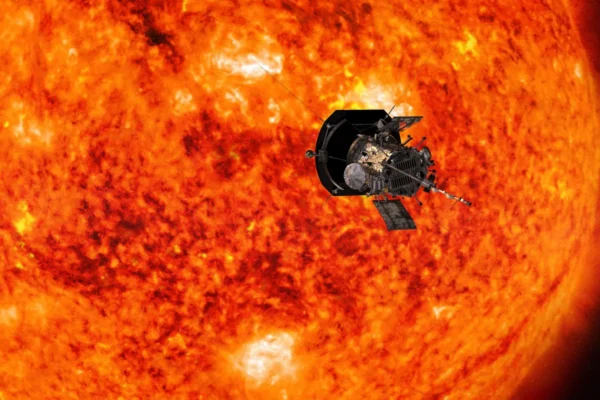The United States National Aeronautics and Space Administration (NASA) announced on Friday (December 28th) that the Parker Solar Probe has safely completed its historic mission of making the closest approach to the sun ever and is operating normally. The Parker spacecraft made history on Christmas Eve.
As people around the world celebrated Christmas Eve, the Parker Solar Probe flew into the sun’s outer atmosphere – the corona, approaching the sun’s surface at a distance of only 3.8 million miles (6.1 million kilometers), aiming to help scientists gain deeper insights into this star closest to Earth.
NASA stated that just before midnight on Thursday, the operations team at the Johns Hopkins Applied Physics Laboratory in Maryland received a beacon signal from Parker, confirming the spacecraft’s status was safe. Parker had been out of contact during its close pass of the corona in the previous two days.
NASA added that detailed telemetry data regarding its status is expected to be transmitted on January 1st.
According to information on NASA’s website, the spacecraft travels at speeds of up to 430,000 miles per hour (692,000 kilometers per hour), enduring temperatures as high as 1,800 degrees Fahrenheit (982 degrees Celsius) and radiation that could damage onboard electronic equipment. However, it is protected by a 4.5-inch (11.5 cm) thick carbon composite shield, with the spacecraft utilizing a strategy of quick entries and exits.
The agency pointed out that “this close study of the sun allows the Parker Solar Probe to measure, helping scientists better understand how material in this region is heated to millions of degrees, trace the source of the solar wind (a continuous stream of matter escaping from the sun), and discover how high-energy particles are accelerated to near the speed of light.”
Launched in 2018, the Parker Solar Probe’s mission is to travel to the center of the solar system. It has completed 21 orbits around the sun and gradually approached it, setting a new record on Christmas Eve – nearing the sun’s surface at only 3.8 million miles (6.1 million kilometers).
Although this distance may not sound very close, Dr. Nicola Fox, head of NASA’s Heliophysics Division, provided a more tangible comparison to the BBC. “We are 93 million miles from the sun, so if you imagine the sun and Earth are one meter apart, Parker Solar Probe is only 4 centimeters away from the sun. So, this distance is indeed close.”
In fact, the Parker spacecraft’s speed exceeds that of any man-made object, traveling at a rate of 430,000 miles per hour, equivalent to flying from London to New York in less than 30 seconds.
The Parker Solar Probe is part of NASA’s “Living With a Star” program, aiming to explore all aspects of the sun-earth system that directly impact life and society.
Scientists hope that as the spacecraft traverses the sun’s outer atmosphere – the corona, it will gather data to unlock a longstanding mystery.
“The corona is really hot, and we don’t know why,” Dr. Jenifer Millard, an astronomer from the Welsh Fifth Star Laboratory, explained to the BBC. “The surface of the sun is around 6,000°C, but the corona, this thin outer layer of the atmosphere visible during a solar eclipse, reaches millions of degrees – even though it is further away from the sun (center). So, how does this atmosphere become so much hotter?”
This mission should also help scientists better understand the solar wind – the stream of charged particles constantly erupting from the corona.
When these particles interact with Earth’s magnetic field, the sky lights up with dazzling auroras. However, this so-called space weather could also pose problems, disrupting power grids, electronic equipment, and communication systems.
“Understanding the sun, its activity, space weather, and solar wind is crucial for our daily lives on Earth,” Dr. Millard emphasized.

